Camel facts you should know include:
Camels are one of the most unusual beasts that have ever walked the earth’s surface. With their elegant walks and long eyelashes, it’s difficult not to admire them for what they are: gorgeous creatures with a wide range of personalities. Let’s look at some of the most interesting facts about camels.
Have you ever ridden a camel? Planning a trip to Morocco?
In Morocco, we are a local travel agency. We specialize in arranging camel rides in Morocco and spending nights at the desert camp like natives headquartered in the Merzouga desert. If you are planning a vacation to Morocco, please contact us and we will make your journey unforgettable.
Take a look at our tours:
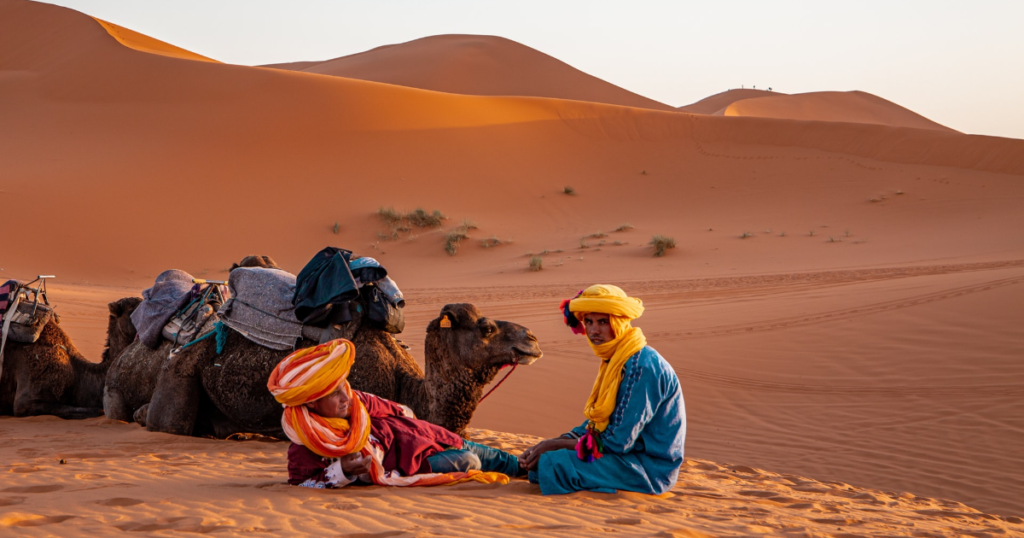
1. Camels can fight.
Camel battles have long been popular in Turkey, albeit they are currently exclusively staged in rural regions. It is a terrible sport, yet the animals do not die as a consequence of it. When one of the camels confesses defeat by laying down on the ground or attempting to flee, the combat is over.
2. Take good care of them.
You should not taunt the camels since they are prone to spitting at the bothersome individual. They spit exceedingly correctly, and their spit stinks horribly since these creatures spew stomach secretions as well as saliva.
3. Camels in the army
Fighting camels were extensively utilized in the armies of several kingdoms throughout ancient times and the Middle Ages. They were mostly employed as delivery animals, although Berbers and Arabs, for example, were actively deploying camel cavalry over 3000 years ago. Each animal normally carried two warriors, one armed with a spear and the other with a bow and arrow.
4. Camels can run quite quickly.
Camels, unlike horses, cannot expel extra heat, thus when they overheat while sprinting, they only raise their body temperature by a few degrees. However, such overheating has an impact on them, and they are unable to run at high speeds for an extended period of time. Camels, on the other hand, can attain speeds of up to 65 km/h over short distances.
5. Mail delivered by camels
Camel mail was formerly prevalent in Central Asia, Australia, and Africa. It was actively employed even in the Soviet Union, and even recently, around a century ago. It was eventually supplanted by vehicles and motorbikes, although it is still used in certain rural regions of Asia.
6. The name’s etymology
There is a widespread misconception on the internet that the word “camel” in Arabic implies “beautiful.” This is not correct: it is derived from the Gothic language, which in turn was derived from the ancient Indians, and the original term meant “elephant.”
7. They store fat rather than water in the humps.
Another belief holds that these creatures retain water in their humps. This is not accurate; the humps of camels retain fat stores that serve two functions. First, it serves as a storage of nutrients and moisture, and second, the fat aids in body temperature regulation.
8. Their lips are not harmed.
The rough skin on camels’ lips is a classic example of variation in modification. The desert has very little flora, and the simplest item to locate is a camel’s thorn. These animals’ lips have coarsened sufficiently through time to allow them to ingest these prickly plants without risk of damage.
9. You should sample some of their milk!
Camel milk is a common dietary item in desert and dry areas. It is incredibly nutritious and includes practically all of the chemicals required for the body’s basic essential activities. A human could survive for roughly a month if they just ate it.
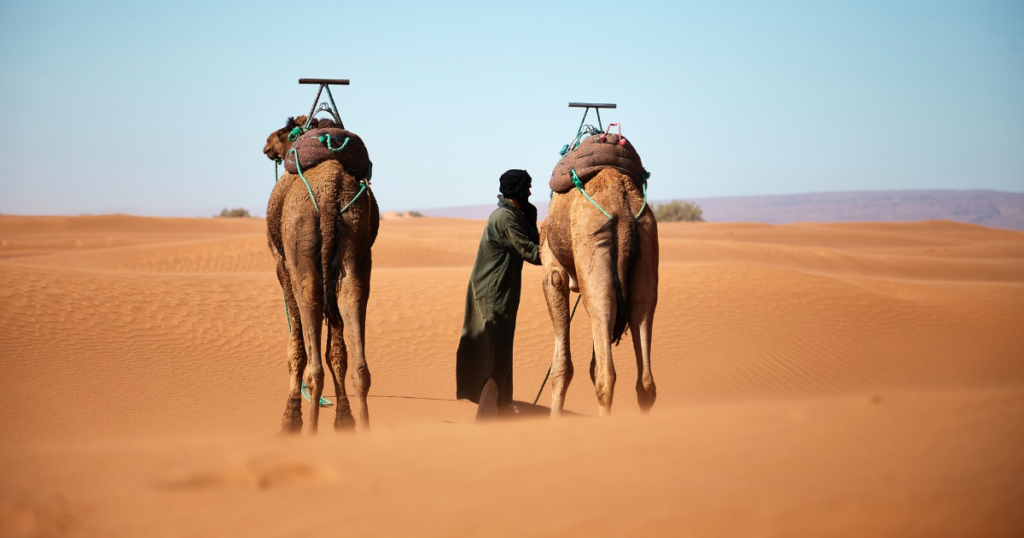
10. Camel breeds are classified into two kinds.
Camels may be two-humped or one-humped (Bactrians) (Dromeders). Huge herds of wild dromedaries were discovered in numerous areas relatively recently, but only their domestic and feral congeners have survived to this day.
11. Australia, the dromedary’s homeland
Surprisingly, Australia has the world’s highest number of wild dromedary camels. Many of these creatures were imported to this continent in the second part of the nineteenth century, and their “wild” population is today believed to be 50-100 thousand individuals.
12. Learn about Camel’s Thorn
Camel’s thorn is a very resilient shrub that can thrive in the harshest desert. Its roots may reach subsurface water sources up to 15-20 meters deep. Camelina is related to beans, peas, and other legumes in the botanical sense.
13. How long does a camel’s pregnancy last?
Camel pregnancy lasts longer than the great majority of living organisms on Earth, often ranging from one year to one year and three months. Despite the fact that elephants, for example, may have gestation spans of up to 22 months.
14. Are there any wild camels around?
There are now just a few hundred wild two-humped camels surviving in the wild, and biologists are skeptical that they will survive. These creatures were domesticated long ago, but their wild ancestors were progressively pushed out of the territory they inhabited, placing them on the verge of extinction.
15. How much can they transport?
These creatures are quite tough. Adults can carry a freight of 250-300 kg, which is just slightly less than half their own weight, and so go 30-40 km per day, even in extreme heat. A camel carrying simply a rider may easily go up to 100 km per day at an average pace of 10-12 kph.
16. Where can you find the most camels?
Contrary to common assumption, Africa has significantly more camels than the Middle East, however they do exist. There are around 14.5 million camels on the African continent, and approximately 19 million camels worldwide.
17. The pads on camels are tough.
Camels have leathery pads on their feet that resemble those of cats and dogs. Camels, on the other hand, have thick and rough pads that protect them from both injury and scorching sand.
18. How heated can their bodies get?
The body temperature of these wonderful creatures is strongly related to the time of day, or more specifically, their activity and the temperature of their surroundings. During the scorching summer days, their temperature may reach 40.5 ° C, and at night, when the “ship of the desert” is sleeping, it can drop to 34-35 ° C. There is a reason for this: their body temperature increases throughout the day, keeping the animal cool and preventing sweating, which wastes essential moisture.
19. Can they live that long?
Camel may easily survive for 40-50 years in the wild since they are seldom preyed upon by predators. They may live even longer in captivity if their masters take care of them, feed them properly, and do not exhaust them with frequent hard work.
20. They breed with llamas.
Camels with a single hump may interbreed with llamas, which are exclusively found in South America. Only artificial insemination allows for this interbreeding, which results in the birth of hybrid camels. They are, nevertheless, both members of the camel family.
21. Camels and dromedaries are the same size.
Adults of two-humped and one-humped camels are almost the same size. The newborn infants of both species are significantly different — a two-humped newborn normally weighs about 60 kilograms, but a one-humped newborn may easily weigh up to 100 kilos.
22. Jews dislike eating camels and drinking camel milk.
Although many people in Africa and the Middle East consume camel milk and meat, Jews have never done so. Camel is regarded an unclean animal in Judaism, hence eating it is banned.
23. Sandstorms can be survived by camels.
Even powerful sandstorms, which occur sometimes in the desert, do not frighten these magnificent creatures. They just lay down on the beach or, preferably, attempt to hide someplace behind rocks, if any are close, to wait them out. Their eyes are safely shielded from sand grains by thick eyelashes that are significantly thicker than human eyelashes.
24. Camels are obstinate.
Camels are notorious for their obstinacy; even expert herders and herdsmen cannot always approach them. It is quite hard to force an animal to get up and move if it wants to lay down and sleep.
25. Their blood cells are oval.
This incredible capacity to withstand extreme dehydration is due to the fact that camels’ red blood cells (red blood cells) are oval rather than spherical like humans’. As a consequence, when they are dehydrated, their blood remains fluid, but when we are dehydrated, our platelets clash and our blood hardens. It is the only animal whose red blood cells are oval.
26. You may get booted, so use caution.
You should never approach a horse from behind because it may kick you with its hoof. Horses can often only kick forward or backward, whereas camels can kick in all four directions and can kill a man with a single kick.
27. These adorable creatures can regulate their noses.
They have a unique ability to regulate their noses, shutting them with deliberate effort and opening them very slightly for inhalation and expiration. This helps them keep sand out of their noses during dust storms.
28. How do they stay alive?
The plant food they consume provides the majority of the moisture they need for proper survival. They must drink as well, although less often than most other terrestrial animals.
29. How valuable are camels?
Camels are highly valued in many nations since they are one of the few agricultural animals. They may replace horses, cows, sheep, and goats at the same time, providing milk, meat, wool, and skin.
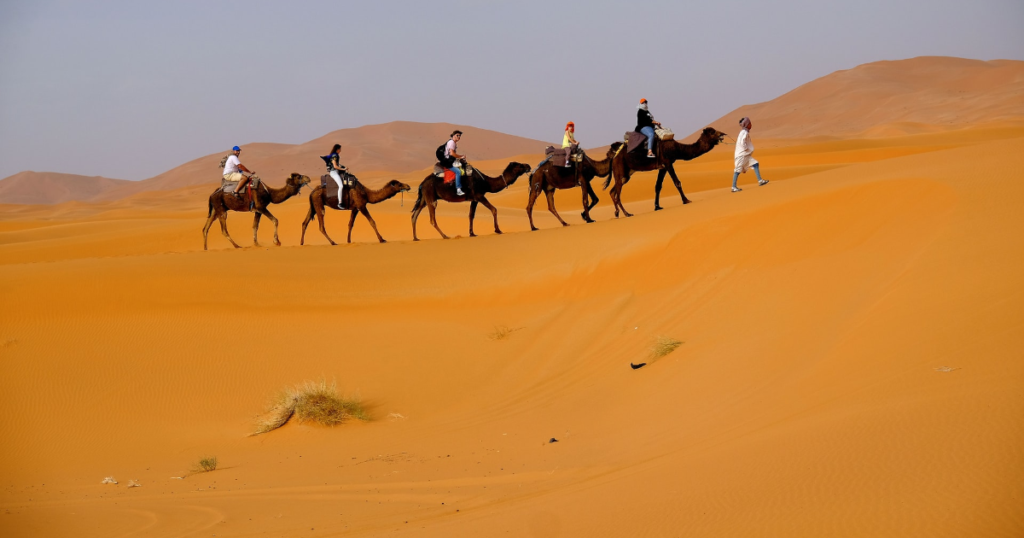
30. Do they really hurt? How?
Not for nothing do angered or furious camels spit straight in the face of the cause of their annoyance. This is how the blind and disorient their opponents, allowing the spit to be followed with a devastating kick.
31. How do Arabians use them?
Despite the fact that camels cannot sprint for lengthy periods of time and are easily scared, Arabians have used them as battle animals for ages. Horses just cannot live in the desert.
32. They can drink quickly!
Camels can drink water quicker than any other animal on the planet. A thirsty animal may drink up to 10 liters per minute, or one liter every 6 seconds on average.
33. How long can they go without food?
Their voracity goes hand in hand with their capacity to go up to 3-4 weeks without nourishment. When there is plenty of food, they consume as much as they can to stock up. A hungry camel may consume up to 35-40 kg of food in one sitting.
34. Are they able to swim?
There are practically no bodies of water where camels dwell in the wild. Despite this, they can swim fairly effectively by nature, despite the fact that most of them have never done it in their lives.
35. What is the difference between one-humped and two-humped camels?
One-humped camels can only survive in warm or hot climes, whereas their two-humped counterparts can also live in colder climates. Surprisingly, in temperate climes, they acquire a lush winter mane that thins and shortens with the arrival of spring warmth.
36. A huge group was in the United States.
In the mid-nineteenth century, a considerable number of Dromaders, or one-humped camels, were introduced to the United States for army use. Many of them eventually turned feral in the wild, but the developed American population died out at the turn of the nineteenth and twentieth century.
37. Camels seem to have a lengthy history.
Long ago, ancient humans were well acquainted with these creatures. Researchers have unearthed many rock paintings representing them, the oldest of which is thought to be about 42,000 years old.
38. Camels and robots number.
Special robot jockeys are often used as riders in camel races in the Arab Emirates. They were created in the mid “zero” years of the XXI century when a regulation prohibiting their employment as jockeys was established – before, this practice was highly prevalent since the lighter the rider, the simpler the camel to run, and this activity is very painful.
39. When they were tamed.
Nobody knows when camels were domesticated. Most experts think that it occurred about 4,000-5,000 years ago on the Arabian Peninsula.
40. Where are they raced?
Camel racing is popular in nations other than the UAE, including Egypt, Pakistan, Qatar, Jordan, Bahrain, and even Australia. Only one-humped dromedaries compete in races.
41. How can others assist them in giving birth?
Female two-humped camels, particularly domestic ones, are often unable to give birth to their pups naturally due to uterine structural differences. In this situation, others assist them, and extracting the fetus requires the combined strength of three to four individuals.
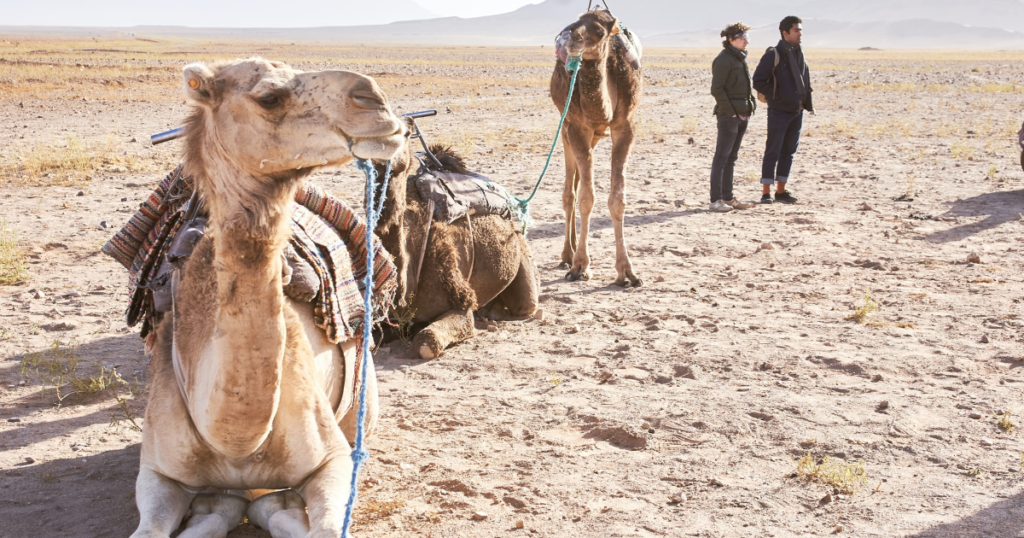
42. Origin of the Camelids
Scientists believe that the earliest camelids evolved in North America. Later, they arrived in Asia through the Bering Isthmus, which had not yet fallen below at the time — currently, the Bering Strait separates Russia and the United States.
43. Learn about Khiml
For ages, the normal camel load, Khiml, has been a typical measure of weight in Muslim nations of the East. The weight of the Khiml varied depending on the country, but it was usually 250 kg.
44. amels can go for lengthy periods of time without drinking.
Camel can endure a week without drinking, which is true, however they may lose up to 40% of their body weight due to dehydration. There is a well-known example in which an animal lost 100 kilograms of weight after not drinking for 8 days, but then drank 103 liters of water in 10 minutes, compensating for the loss without injuring itself.
45. Their excrement may be utilized
In scorching, arid deserts, no one can afford to squander moisture, and camels are well fitted to save it. Even their droppings are so dry that they may be used as firewood, as Bedouins and Arabs have done successfully for ages.
46. They have a keen sense of smell.
They have an acute sense of smell, and their nostrils are especially sensitive to variations in air humidity. They can detect a body of water from up to fifty to sixty kilometers away because of this ability.
Articles to read:
- What to see in Erfoud, top things to do and discover
- Top 8 Kasbahs in Morocco
- The Moroccan marriage traditions
- The Moroccan hammam, Why you should try it?
- The ideal Easter itinerary in Morocco
- The best desert in Morocco, Merzouga vs Zagora
- Tetouan city of Morocco
- Skiing in Morocco, Oukaimeden and Michlifen resorts
- Quads and ATVs in Merzouga desert, Morocco
- Official languages of Morocco
- Museums in Morocco
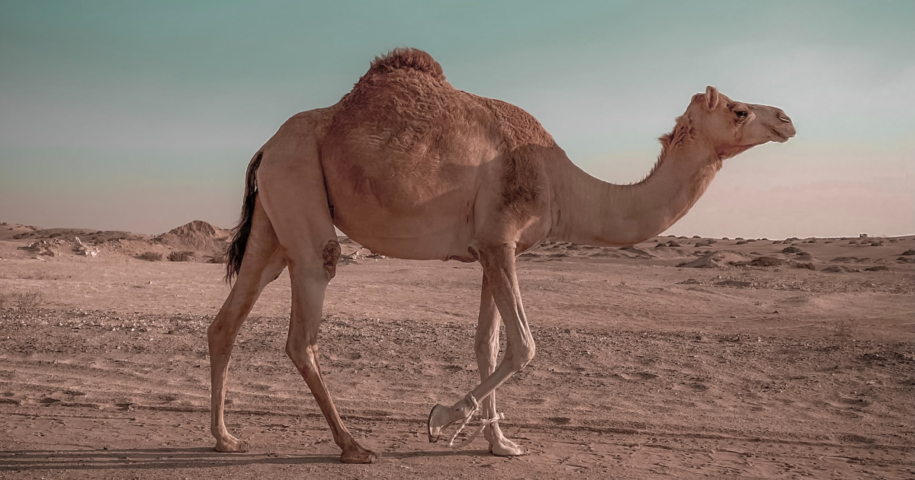
Leave a Reply